Enjoy
Blog
Contents
All is fair in love and war but darling this is both
March 15 2023, by Nicole Galvin
I never know how to write about us, do you?
For some reason writing about us always feels wrong. Like writing an obituary for someone who’s still alive. Like maybe it’s tempting fate. You’ve always told me just to start from the beginning, and that the rest will work itself out from there, but that’s more easily said than done. Because how do you know where the beginning of something is, when you’re still at the beginning of it? For me at least, that sort of clarity comes much later, usually long after its ended.
But if experience has taught me anything it is that time is cyclical, and that words like ‘beginning’ and ‘end’ are all just synonyms for the same sort of feeling. Maybe that’s where we start then; the end of the beginning and the beginning of everything else, and then, eventually, the end.
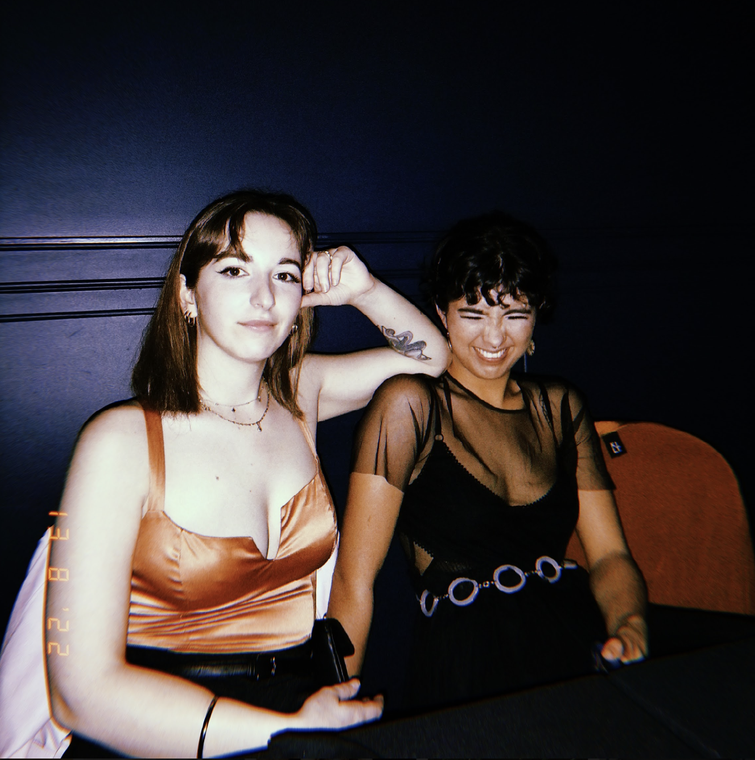
Nicole Galvin, All is fair in love and war but darling this is both, 2016 - present, photo series.
Right now, it’s the third month of 2023. The new semester has begun, and I’ve just started teaching. It’s the same class that I took in the first semester of the very first year of my undergrad. In the same room, of the same building, of the same institution. Last week we introduced the students to the work of Pati Solomena Tyrell, to introduce them to contemporary queer practices in Aotearoa. Pati’s work interrogates gender discourse, so we asked the group how many of them identified as cis-. Less that 30% of the room raised their hand. Last year we asked the same question to a different group of students and it was an even 50/50 split. If I had been asked the same question at 18, I would not have understood what it meant. I had only the most basic of understandings of what it meant to be queer then.
It is so good to see the way this is changing. It is comforting to see the way our queer youth know themselves—and are unapologetic in this knowing.
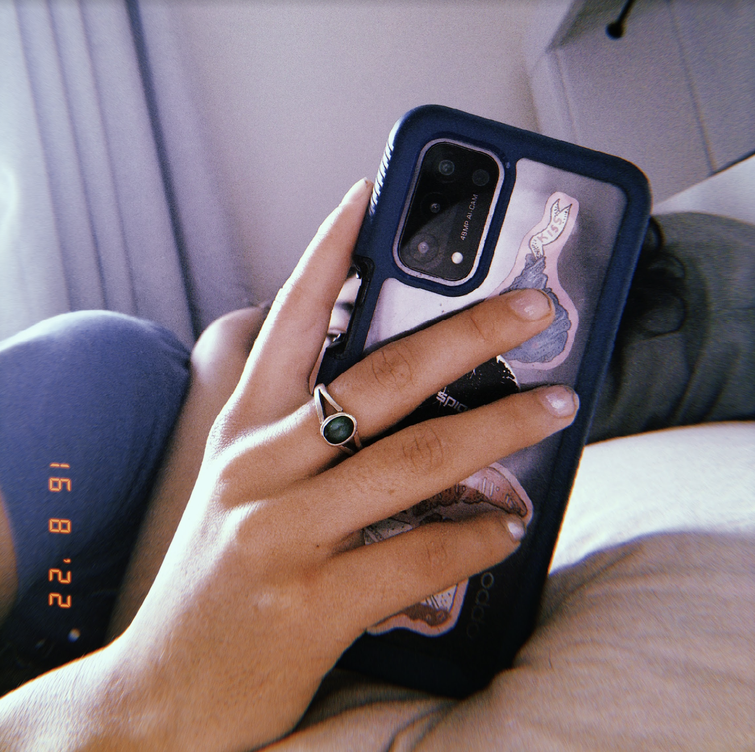
Nicole Galvin, All is fair in love and war but darling this is both, 2016 - present, photo series.
When I was 18 (in 2017) being queer was a very different thing to what it is now.
For me 2017 marked the start of my initial explorations into queer modes of practice. For us, 2017 was our first real taste on independence. Our entry-point into adulthood. We moved out of home, I came out, you came out—we came out to each other—we became friends. We found people to fall in love withand then fell out of love with them. I met a girl, and moved in with her, then she left me to move to the other side of the world. I got over it. You had your first real heartbreak, and you’re still moving on. We gave parts of ourselves to people who didn’t deserve them, and didn’t give enough to the people who did. We became someone, who became someone else, and we figured out what that meant to us—what the world meant to us. And realized that the world is hostile—but that it is also comforting. And somewhere along the way we formed the foundations for all the things that came after. You and I became us—which became all of us. We came together and constructed for ourselves our own microcosmic queer community—a whole world in and of itself. We grew up, and grew outwards, and began to understand our places in the world.
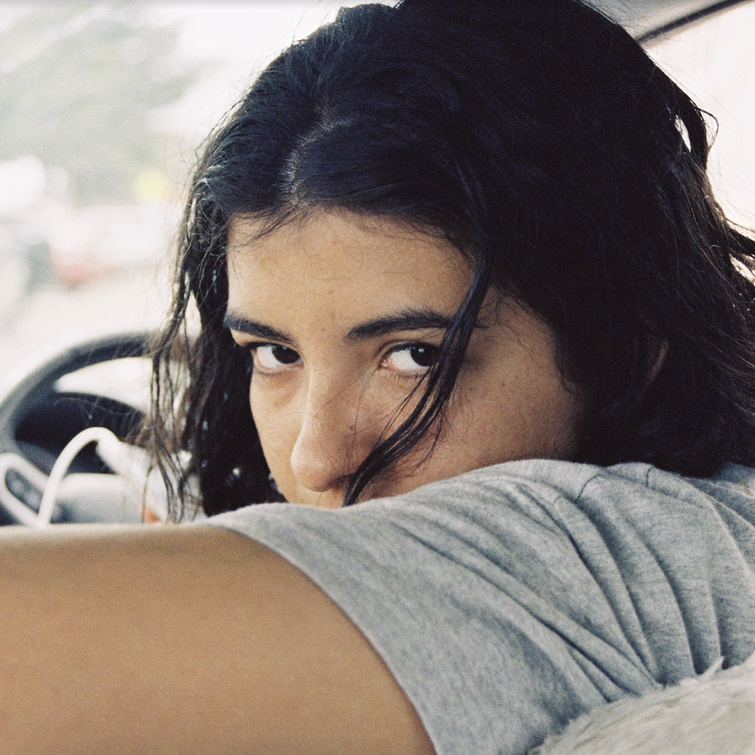
Nicole Galvin, All is fair in love and war but darling this is both, 2016 - present, photo series.
I bought my first film camera that year. And I’ve been taking photos of us ever since.
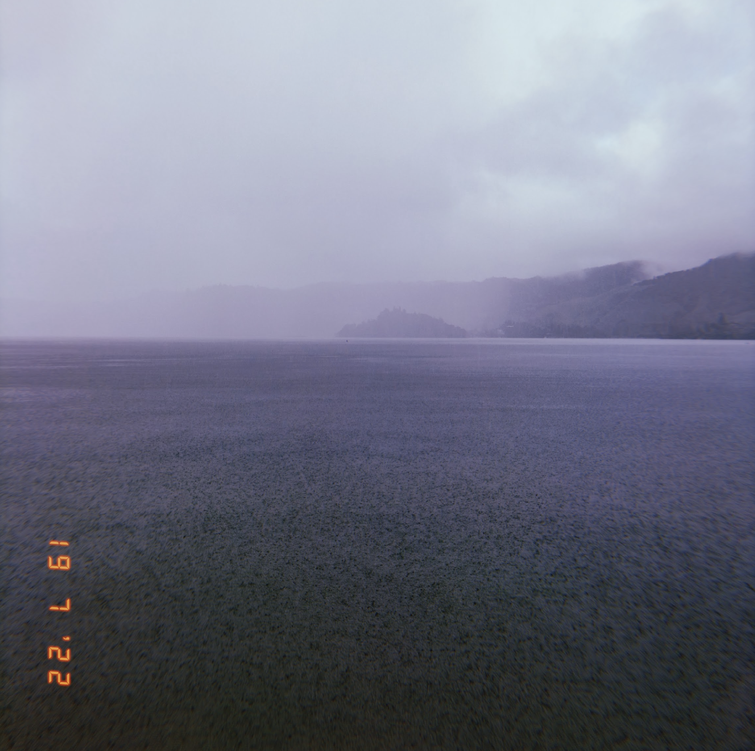
Nicole Galvin, All is fair in love and war but darling this is both, 2016 - present, photo series.
These photos became a sort of ritual for me. A capturing and recording of us, of all the people we meant something to, and the building of our lives. They were a representation of lives taking place, and the significance of that. Documentation of the people who brought me comfort, and reminders of people who I couldn’t stand anymore but loved once upon a time and who took with them parts of a version of myself I can never return to. An archive of all of us here.
In the height of our ‘starving student’ era I couldn’t afford to have all the rolls developed, so I put them to the side for later and told you I was making us into a time capsule.
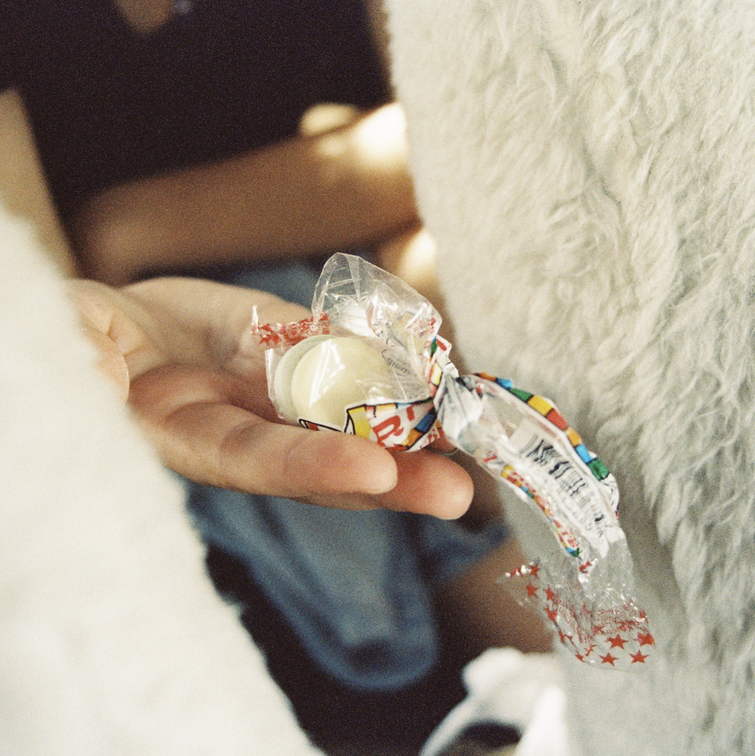
Nicole Galvin, All is fair in love and war but darling this is both, 2016 - present, photo series.
In this moment, as in all others, we are endless—and beginningless, and part of something much bigger than ourselves. It goes something like this: the time that I felt the most alive we were driving recklessly down the motorway in my car, or your car, or another car entirely, scream-singing our favourite songs from the early 2000s, going 120km and climbing. It was the first time I felt immortal.
And then: you send me one-word replies on Facebook messenger and I wonder if things will ever feel the way they did that day again.
And now: we sit next to each other on the floor of my bedroom watching some stupid heteronormative rom-com. We don’t say much but the silence is comfortable. And we are not immortal, but we are both here—and that’s enough.
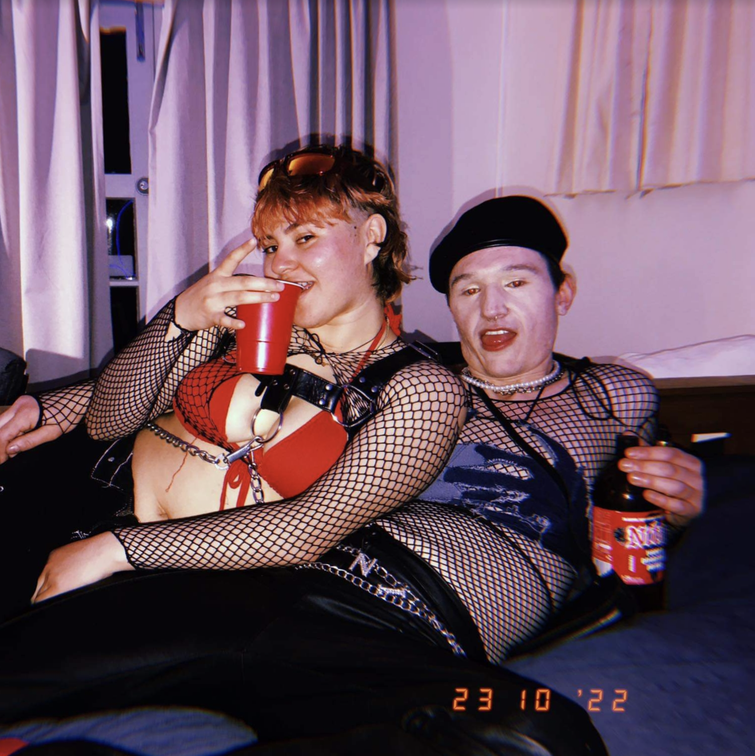
Nicole Galvin, All is fair in love and war but darling this is both, 2016 - present, photo series.
I found them again at the beginning of last year—in a box full of outgrown things that were on their way to being thrown away. I got them developed and sent everyone a folder of hundreds and hundreds of six-year-old images. After this I went through every photo app, google folder, and image file I could find of mine, and also yours, and a lot of other peoples and together we built an archive that looked forwards, and backwards, and met somewhere in the middle.
It was crazy to see how much had changed, how much we had changed—but also to see how we haven’t. To see that the people I cared for then are still some of my most important people now. To be reminded of the relationships that have ended, or fell apart, or drifted away—and the new relationships that came from those. To find the people I have met since, or re-met after some time, as different people, and who we’ve become to each other now. These were reminders of our affect—of our taking place.
In a world that is becoming more and more the conservative, seemingly daily, it felt important for us to see these, as queer people living, and participating in the world at this moment—and to allow others to see them. To make public our own private lives, experiences, happenings, and the coming together of queer people in space and time and community. To open outwards the world we have carved out for ourselves in an (often) hostile arena. Because you are not hostile—and being a part of us is what makes life bearable, it is what sustains me. And maybe in seeing us, someone might also see themselves and be comforted. Or maybe in seeing our experiences, someone might realize that there is not as much separating us as you might think.
Because I never knew, in 2017, that it could be this way now. I would never have hoped for us to become the people we ended up growing into.

Nicole Galvin, All is fair in love and war but darling this is both, 2016 - present, photo series.
I think a lot about what it means to be contemporarily queer in 2023 here in Pōneke, Aotearoa and how this is different from being queer in 2017—and how it is similar. How it is different and similar to being queer in 1998, or 1980, or 1972 and what everything would have been like then. I think about what it means to be a 24-year-old queer woman at this point in space, time, and history, and what it will mean for those who are 24 and queer in 5 years from now—or 10, or 20. What of our experiences will be continuous, and what will be different. Who will we be then?
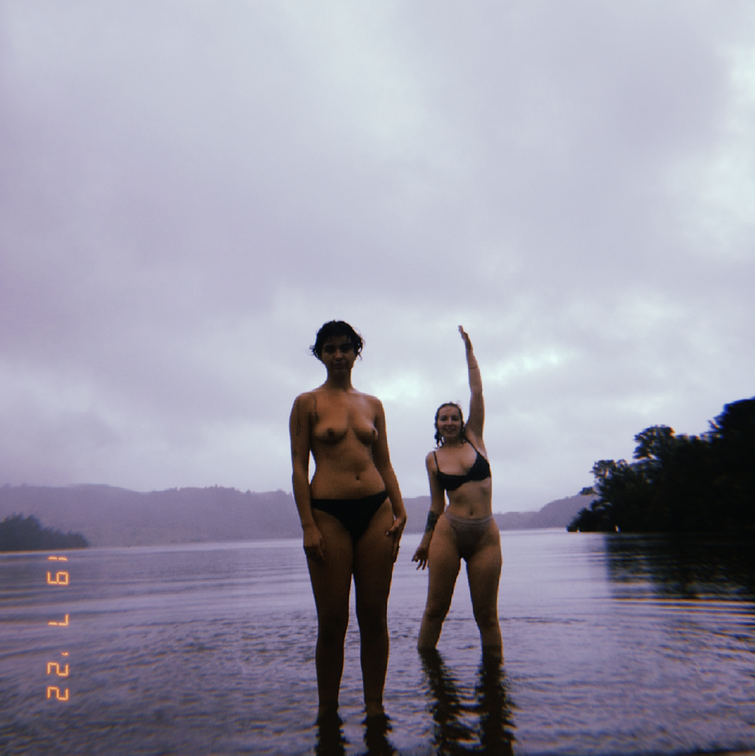
Nicole Galvin, All is fair in love and war but darling this is both, 2016 - present, photo series.
I seek out queer images as a means to access alternative possibilities for our being in the world - and because I find comfort in the fact that there were people, like me, and all of us, who came before, and built for themselves their own communities, and made space, and loved queerly, and lived lives despite intolerances and annihilating opposition. And I am drawn to documentations of these lives, to works by artists like Fiona Clark, and Ans Westra’s ‘Interior views of the Purple Onion revue bar’. Artists who sought to make visible these queer lives and queer ways of living, sought to make them ‘real’ and accessible, and have made it possible for all of us to place ourselves within our histories and see ourselves in a world that would rather we not be public. Because these were real people with real stories and real experiences—both similar to my own, and not. And these queer archives have become our inheritance.
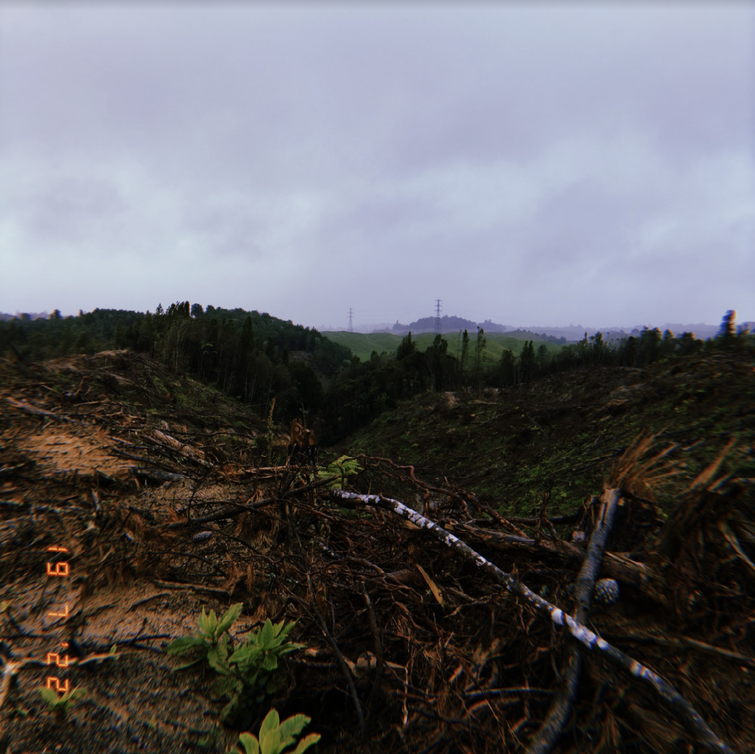
Nicole Galvin, All is fair in love and war but darling this is both, 2016 - present, photo series.
If those images are my inheritance, then these are my legacy. They act as a record of our continued taking place, of the resilience of queer culture, and the way it changes. These photographs of us hold within them the things I refuse to lose to time, or distance, or memory.
These are the things that have made us into what we have become. It is an ever growing, ever changing archive of our past, our present (our presence). Of our growings up and moving ons—and moving forward. The markers of our being-in-the-world, of the world we made for ourselves, of the world we continue to make.
We are here. We are still taking place, and making space, for ourselves and all those who come after. We, as queer individuals and communities and people who are a part of the world, are a part of something uniquely felt—but collectively experienced. A continuation of a queer legacy of being visible, for everyone who isn’t yet able to be. And I won’t test fate any longer by continuing to write about us, not that I need to—not when it’s all already here.
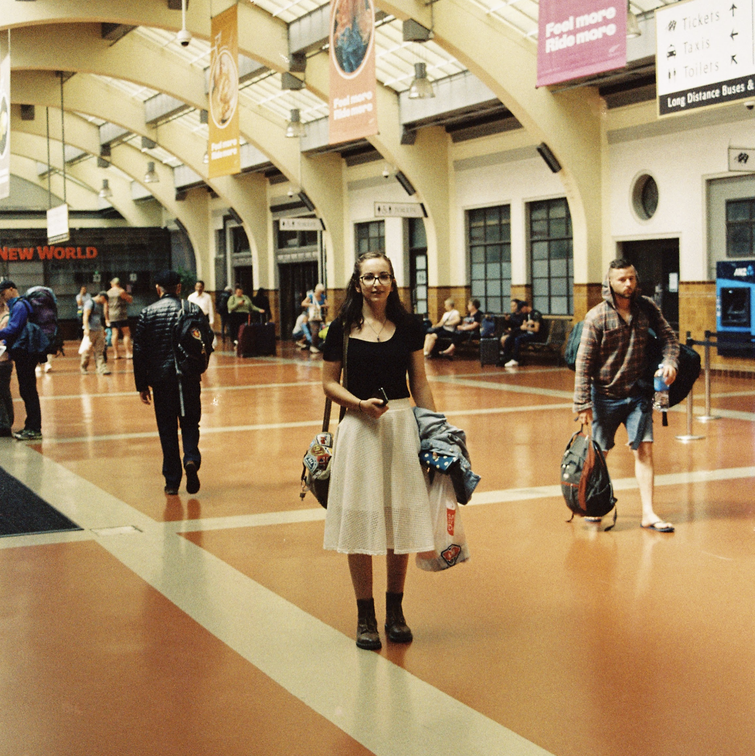
Nicole Galvin, All is fair in love and war but darling this is both, 2016 - present, photo series.
Nicole Galvin
Nicole Galvin is a Pōneke based artist and researcher. Her work examines social experiences of youth culture and being LGBTQIA+. Through the exploration of 'bodies', narratives and intimacy, Galvin's work deconstructs/reconstructs these things and their relationships to the societally enforced hierarchies that privilege some bodies, identities, and communities and abject others.
